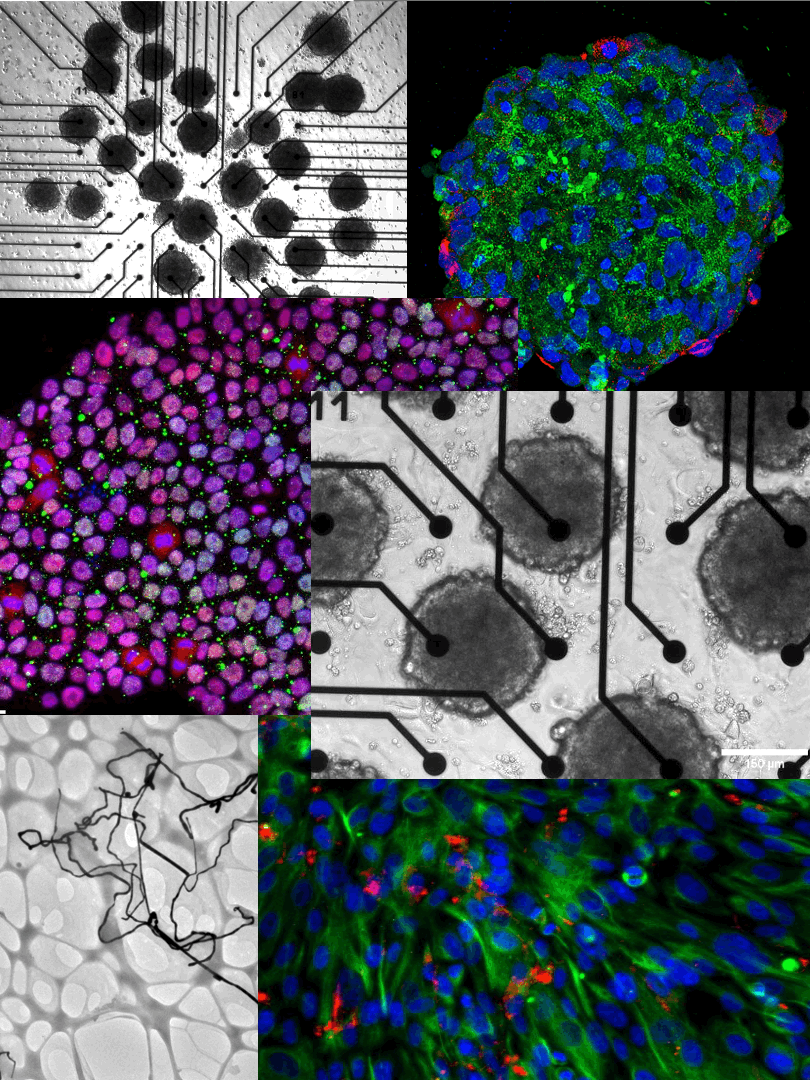Ex Vivo Microengineered Organoids

Three-dimensional ex vivo cellular cultures, engineered through cellular self-assembly under natural extracellular matrix (ECM) cues or through a biomaterial-based directed assembly, have emerged as powerful in vitro technologies for a wide range of biomedical applications. The ex vivo tissue models imitate one or more physiologically-relevant features and functions of target organs. The on-chip technologies and materials-based organoids have garnered enormous momentum, in the past few years, for their applications in disease modeling, mammalian tissue development, drug screening, and therapy design or even organ replacement.
| A. Patino-Guerrero, Ruben P. Wong, V. Kodibagkar, W. Wuqiang, R. Q. Migrino, O. Graudejus, M. Nikkhah*, “Generation of Isogenic Human Induced Pluripotent Stem Cell-Derived Cardiac Organoids”, ACS Biomaterials Science & Engineering, Accepted, In Press (2022). A. Singh*, M. Nikkhah*, N Annabi*, “Editorial: Biomaterials, Cells, and Patho-physiology: Building Better Organoids and On-Chip Technologies”, Biomaterials, 198, 1-2, (2019). |
Nanoengineered & Electrically Conductive Biomaterials
The development of advanced biomaterials is a crucial step to enhance the efficacy of tissue engineering strategies for treatment of myocardial infarction. Specific characteristics of biomaterials including electrical conductivity, mechanical robustness and structural integrity need to be tuned to promote the functionalities of cardiac cells. In our lab, we have developed a new class of biomaterial scaffolding comprised of electrically conductive gold nanorods (GNRs) incorporated with photocrosslinkable gelatin-based hydrogel (GelMA) for engineering cardiac tissues with synchronous functionalities. GNRs bridge the electrically insulated matrix of gelatin hydrogel, which leads to enhanced propagation of electrical signal within the cardiac patch and consequently promotes the electromechanical cell-cell coupling.

A. Benbuk+, H. Esmaeili+, S. Liu, A. Patino, R. Q. Migrino, J. Chae, M. Nikkhah*, J. Blain Christen*, “Passive and Flexible Wireless Electronics Fabricated on Parylene/PDMS Substrate for Stimulation of Human Stem Cell-derived Cardiomyocytes”, ACS Sensors, 2022. |
A. Buchberger, H. Saini, K.R. Eliato, A. Zare, R. Merkley, Y. Xu, J. Bernal, R. Ros, M.Nikkhah*, and N. Stephanopoulos, Reversible Control of Gelatin Hydrogel Stiffness by Using DNA Crosslinkers. ChemBioChem, 22(10), pp.1755-1760, 2021. |

